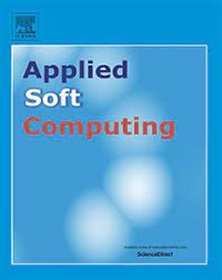A morphological difference and statistically sparse transformer-based deep neural network for medical image segmentation
IF 7.2
1区 计算机科学
Q1 COMPUTER SCIENCE, ARTIFICIAL INTELLIGENCE
引用次数: 0
Abstract
Medical image segmentation plays a pivotal role in enhancing disease diagnosis and treatment planning. However, existing methods often struggle with the complexity of lesion boundaries and the computational demands of Transformer-based approaches. To address these challenges, we propose a morphological difference and statistically sparse Transformer-based deep neural network for medical image segmentation, termed MD-SSFormer. It comprises two critical modules: the dual branch encoder (DBEncoder) module, and the morphological difference catcher (MDC). To extract abundant information at different aspects, a novel DBEncoder module integrates the capability of the convolutional neural network-based method in capturing local texture and the ability of the Transformer-based method in modeling global information. Compared to the conventional feature extraction methods, DBEncoder achieves comprehensive improvement. Furthermore, the statistics-based sparse Transformer (SSFormer) module develops an innovative statistical analysis and an adaptive patch-dividing strategy to perform attention-computing, which addresses the computational challenges associated with conventional Transformer-based models. Finally, considering the impacts of the blurry and complex boundaries, the MDC module employs the morphological operation and differential information extractor to refine the details, which achieves high-precision boundary understanding. Experimental results on five public datasets demonstrate MD-SSFormer's superior performance, achieving state-of-the-art Dice scores of 83.60 % on ISIC 2017, 79.52 % on Kvasir-SEG, 61.89 % on BUSI, 78.62 % on BraTS21, and 85.85 % on 3DIRCADb, outperforming other methods in accuracy, precision, and computational efficiency respectively.
求助全文
约1分钟内获得全文
求助全文
来源期刊

Applied Soft Computing
工程技术-计算机:跨学科应用
CiteScore
15.80
自引率
6.90%
发文量
874
审稿时长
10.9 months
期刊介绍:
Applied Soft Computing is an international journal promoting an integrated view of soft computing to solve real life problems.The focus is to publish the highest quality research in application and convergence of the areas of Fuzzy Logic, Neural Networks, Evolutionary Computing, Rough Sets and other similar techniques to address real world complexities.
Applied Soft Computing is a rolling publication: articles are published as soon as the editor-in-chief has accepted them. Therefore, the web site will continuously be updated with new articles and the publication time will be short.
 求助内容:
求助内容: 应助结果提醒方式:
应助结果提醒方式:


